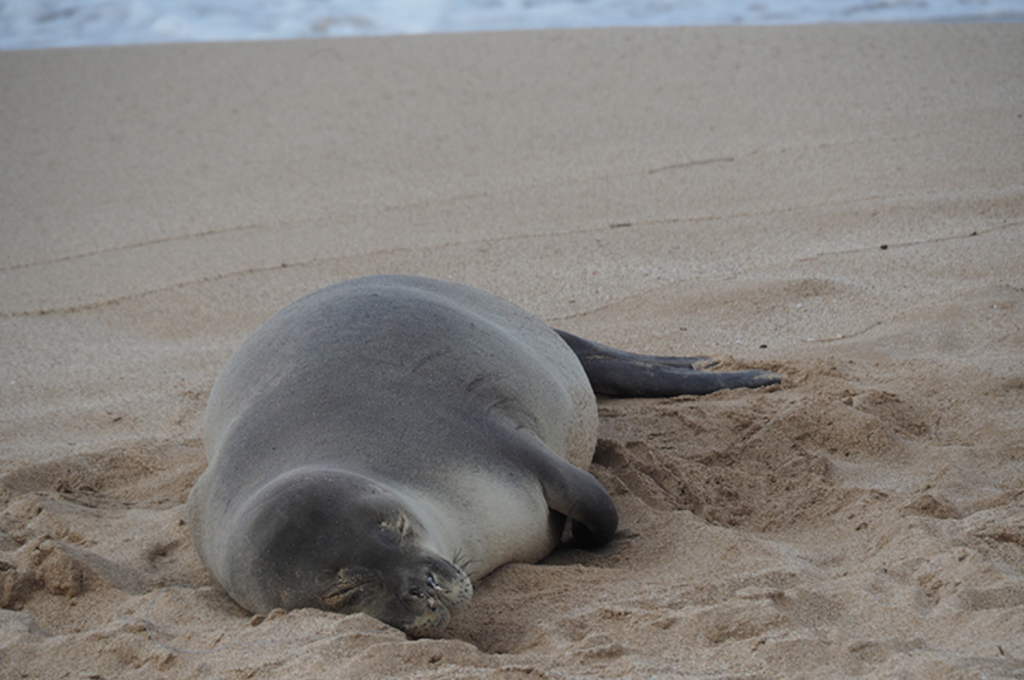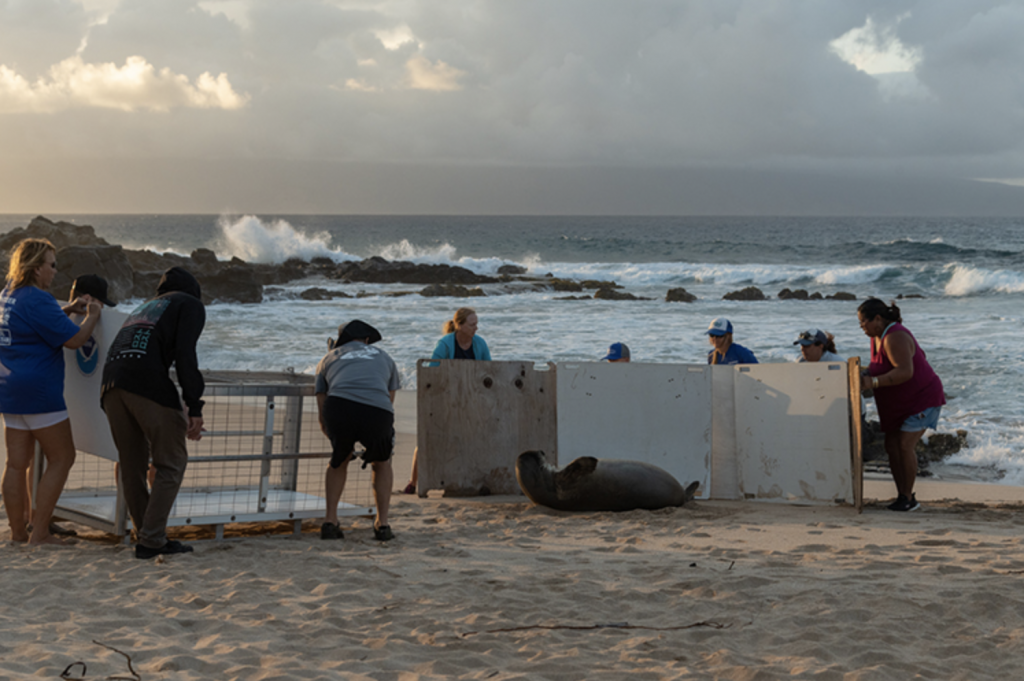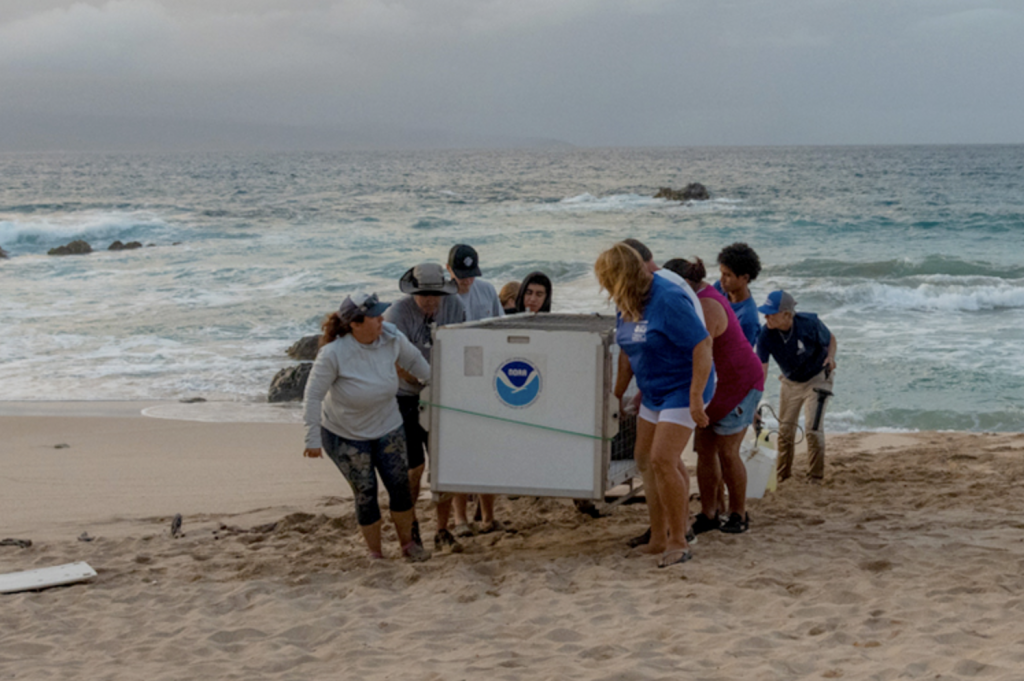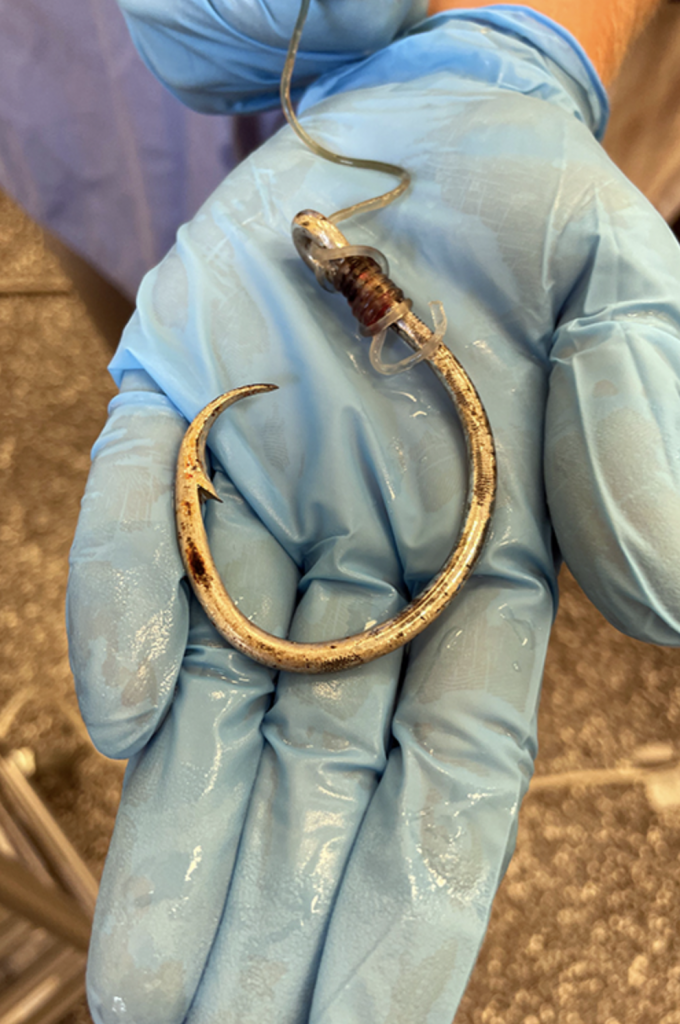Hooked juvenile monk seal found on Maui, recovering after rescue
A juvenile monk seal is recovering after surgery to remove a large hook that the animal had ingested and which was lodged in his esophagus.
NOAA Marine Wildlife officials were notified of the incident by the public when the animal was spotted March 30 on Maui’s Oneloa Beach in Kapalua.
Photos from a zoom lens showed 3-4 feet of monofilament line trailing from the seal’s mouth. The seal’s identity was confirmed through images of the animal’s flipper ID tag.

“Thanks to quick responses by NOAA Fisheries, our partners, volunteers, and the public, the hooked juvenile male monk seal RL72 is now hook-free and safely rehabilitating at The Marine Mammal Center’s Hawaiian monk seal hospital and visitor center on Hawaiʻi Island, Ke Kai Ola,” according to a NOAA update.
According to NOAA, Maui staff from NOAA Fisheries and State of Hawaiʻi Department of Land and Natural Resources initiated an on-the-ground response.
Agency officials say ingesting a hook can be life-threatening for a seal, so prompt removal is critical to survival.
NOAA Fisheries, DLNR, The Marine Mammal Center, and the US Coast Guard prepared to provide veterinary and logistical support to capture RL72 from the Maui beach and provide him life-saving medical care at Ke Kai Ola.

Challenges in rescuing RL72 included a long transport from the vehicle parking area and uphill from where the seal was located.
Rather than try to carry the 400-pound load (RL72 in a transportation cage) across sand, the team opted to use the boardwalk route which still required a trek uphill via a short, narrow trail.
“The difficulties didn’t end there. The last leg of the route was a staircase that was simply too narrow to fit the seal’s cage and its haulers. Thankfully, the team found a nearby property owner willing to provide an alternate route through a locked easement near the stairs,” according to a NOAA update.


Crews estimate the rescue took the better part of the day. The animal was initially taken to the DLNR Division of Aquatic Resources facility where monitoring was conducted overnight.
The next day, NOAA Fisheries and partners boarded RL72 on a US Coast Guard C-130 plane, and the seal flew from Maui to Ke Kai Ola on Hawaiʻi Island, according to NOAA.


“The successful effort to dehook RL72 was quite complex and required surgery under anesthesia to remove the hook from the animal’s esophagus,” said Dr. Sophie Whoriskey, the Center’s Hawaiian Monk Seal Conservation veterinarian in a NOAA update. “This was an incredible team effort to help give this suffering monk seal a second chance at life and is a testament to the ongoing partnerships to help save this endangered species.”
After the surgery on April 7, the Center’s veterinary experts reported that RL72 was stable, comfortable, and alert.
“No estimated timetable for release has been determined. The seal will be assessed regularly to determine when his recovery from the surgery is complete and release is appropriate,” according to NOAA.
Since 2014, the Center has rehabilitated and released 37 monk seals, most of which have been rescued from and returned to the Northwestern Hawaiian Islands as part of the Center’s partnership with NOAA Fisheries, utilizing resources in the area to identify seals in need, rescue and rehabilitate them, and give them a chance to return to their ocean home.
NOAA Fisheries estimates that approximately 30% of Hawaiian monk seals that are alive today are due to conservation efforts led by the agency and its partners. “This happy ending would not have been possible without our partners, as well as the public’s prompt reporting,” according to the agency.
“This story is also a reminder to report any seal—even those that do not appear to need help—to the statewide NOAA Marine Hotline at 888-256-9840,” according to NOAA. Additionally, the agency recommends these best practices to reduce injuries to monk seals when fishing.









